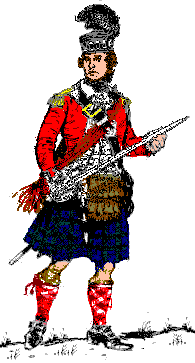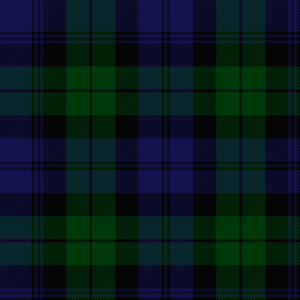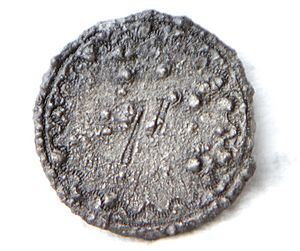71st Regiment of Foot, Fraser's Highlanders facts for kids
Quick facts for kids 71st Regiment of Foot, Fraser's Highlanders |
|
|---|---|
| Active | 1775–1786 |
| Country | |
| Branch | |
| Type | Infantry |
| Size | One battalion (two battalions 1775–1783) |
| Engagements | American Revolutionary War |
The 71st Regiment of Foot was a special group of soldiers in the British Army. They were a type of infantry, which means they fought on foot. This regiment was formed in 1775, during the American Revolutionary War. People also knew them as Fraser's Highlanders. The regiment stopped being a military unit in 1786.
Contents
History of the 71st Regiment
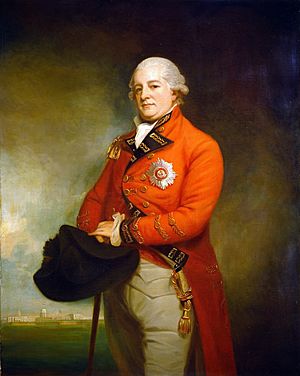
How the Regiment Started
The 71st Regiment of Foot was created in 1775. Lieutenant-General Simon Fraser of Lovat formed them. They were raised in places like Inverness, Stirling, and Glasgow in Scotland. The plan was for them to fight in the American Revolutionary War. People in Glasgow were very happy to see them.
One person wrote that the soldiers behaved very well. They were friendly with the people of Glasgow. This made everyone get along great.
The regiment sailed to North America in April 1776. During the trip, some soldiers from the Cameron clan got upset. They heard they wouldn't be led by Captain Cameron of Lochiel. But they calmed down when they learned their leader was Captain Cameron of Fassifern. Their ship arrived in New York City in July 1776. American troops attacked the regiment when they reached Boston Harbor.
Battles and Operations
The 71st Regiment of Foot joined General William Howe at Staten Island. They were sent into battle almost right away. The grenadiers, who were special soldiers, were led by Lieutenant Colonel Charles Stewart. Other companies were led by Brigadier Sir William Erskine.
The regiment first fought at the Battle of Long Island in August 1776. The British soldiers won this battle. Only three soldiers from the 71st Regiment died. Eleven others were wounded.
Next, the 71st Regiment fought at the Battle of Fort Washington in November 1776. Then they were at the Battle of Fort Lee later that month. The regiment also took part in the Philadelphia Campaign. They fought in the Battle of Brandywine in September 1777.
A small group from the 71st Regiment helped General John Burgoyne. They helped him in his actions along the Hudson River. This included capturing Forts Clinton and Montgomery in October 1777.
The regiment also fought in the southern part of the war. They were led by Lieutenant-Colonel Archibald Campbell. They fought at the Capture of Savannah in December 1778. At Savannah, Campbell told Sir James Baird to take soldiers and attack the Americans from the side. Campbell's own troops waited out of sight. The Americans didn't know they were surrounded. They were defeated and left the city.
The regiment was then led by Lieutenant Colonel John Maitland. They took part in the Battle of Brier Creek in March 1779. At Brier Creek, the first group of the regiment attacked the Americans from the front. The second group attacked them from behind. Again, the Americans were defeated.
After that, the regiment defended the city during the Siege of Savannah in September 1779. They were also at the Siege of Charleston in March 1780. They fought in the Battle of Camden in August 1780. Then they were at the Battle of Cowpens in January 1781.
Their next fight was at the Battle of Guilford Court House in March 1781. One officer from the 71st Regiment said that "one half of the Highlanders dropped on that spot." This means many soldiers were killed or wounded. The regiment's last battle was at the Siege of Yorktown in September 1781.
Changes to the Regiment
On April 30, 1782, the War Office made a decision. They told Sir Guy Carleton, who was the top British commander in North America, about it. Lieutenant General Fraser had died. So, the two groups of the 71st Regiment would become two separate units.
One unit would be the 71st Regiment. Colonel Thomas Stirling would lead it. The other unit was the Second 71st Regiment. The Earl of Balcarres would lead this one. New soldiers were to join this second unit from the Scottish Highlands.
All the soldiers currently serving in America would join the new 71st Regiment. This included prisoners of war. Extra companies in Newfoundland would also join. Other companies in Britain would join the Second 71st. The new 71st Regiment, with 12 companies, would stay in America. The officers and non-commissioned officers of the Second 71st would sail to Britain.
The two new 71st companies stayed in South Carolina. They left Charleston on December 18, 1782. The officers of the Second 71st sailed to England. The remaining 189 men of the 71st Regiment sailed to Jamaica.
Some ships leaving Charleston went to St. Augustine, Florida. It seems at least one soldier from the 71st was shipwrecked there. Archaeologists found a pewter button from a 71st Regiment uniform. It was found on a shipwreck site from the 1782 Charleston evacuation. The regiment was officially stopped in Scotland in 1786.
Uniform of the Regiment
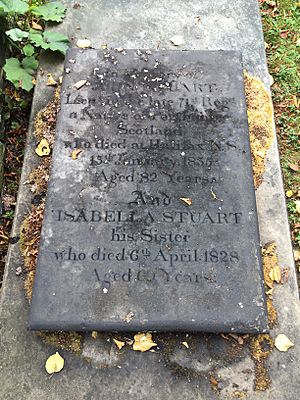
The soldiers wore a type of trousers called trews. These had a standard military tartan pattern. It was officially called 'Government' tartan. Today, it is more commonly known as "Black Watch." They also wore a cartridge box around their stomach. This held their ammunition.
Regiment Leaders
These were the main leaders, called Colonels, of the regiment:
71st Regiment of (Highland) Foot (Fraser's Highlanders) (1775–1786)
- 1775–1782: Lt-Gen. Hon. Simon Fraser of Lovat
- 1782–1783: Gen. Alexander Lindsay, 6th Earl of Balcarres
See also
- 78th Fraser Highlanders, an earlier regiment also raised by Simon Fraser of Lovat but for the French and Indian War
Sources


